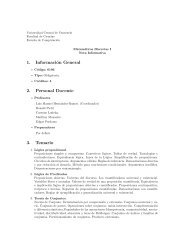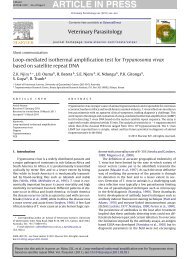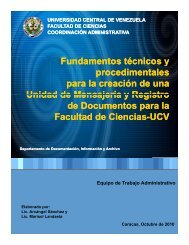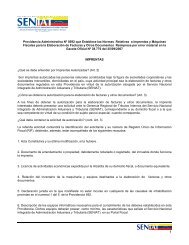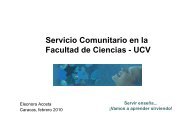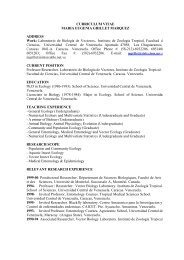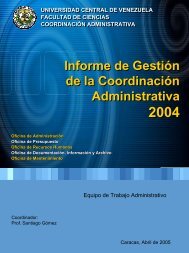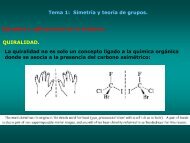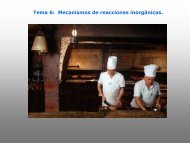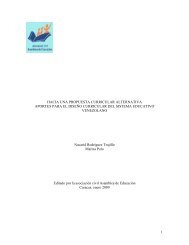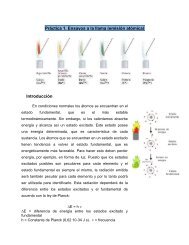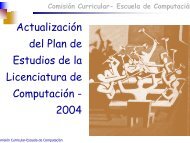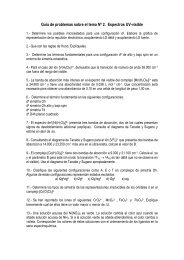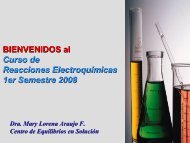Collecting and Preserving
Collecting and Preserving
Collecting and Preserving
- No tags were found...
Create successful ePaper yourself
Turn your PDF publications into a flip-book with our unique Google optimized e-Paper software.
pellets in about 10 ml of water may be used for a day. Thesolution, however, is useless if left overnight. Even if itboils dry on a hotplate set a little above its boiling point, aspecimen in it will seldom be damaged by NaOH, althoughit will be completely dissolved in KOH. Addingwater to a specimen boiled dry in NaOH solution willusually restore it.For directions on how to macerate insect genitalia,see p. 37.(2) Washing. For the removal of the caustic agentused to macerate the specimen, ordinary tapwater in asmall dish, such as a small plastic bottle cover, will suffice.Distilled water is unnecessary. If the specimen is placedfor at least a few minutes in plain water for manipulation,dissection, or examination, it then will be ready for furthertreatment. Adding a drop of acetic acid (white vinegar)will guarantee that no caustic remains.(3a) Staining. After clearing <strong>and</strong> washing, specimensmay be stained if necessary, although if a phase-contrastmicroscope is available, staining, even with colorlessspecimens, is unnecessary. Several kinds of stains areavailable from biological supply houses. Acid fuchsin isgenerally used for aphids, lice, <strong>and</strong> scale insects. Chlorozolblack or mercurochrome generally are used for microlepidoptera,although the latter may fade over time. Thrips <strong>and</strong>fleas should never be stained; most acarologists do notstain mites if they are to be mounted in Hoyer’s medium.An easily obtained stain for the exoskeleton of insects ismade by dissolving a small amount of Mercurochromecrystals in water. Specimens may be immersed in the stainsolution for 1 minute or more, depending on the degree ofstaining needed, <strong>and</strong> then briefly rinsed in plain water.Techniques <strong>and</strong> ToolsGenitalia (p. 37); if it is to be mounted on a slide, furthertreatment depends on the mounting medium used.(4a) Temporary Mounting. A temporary mount canbe made with lactic acid or other medium on a 2.5- by 7.5-cm cavity slide. The specimen is placed near the edge ofthe cavity <strong>and</strong> wedged into position by manipulating acover glass over the cavity <strong>and</strong> the specimen. A fine needlewill help bring the specimen into the desired positionbefore the cover glass is centered over the cavity. Once thespecimen is in position <strong>and</strong> the cover glass centered, acommercial ringing compound, nail polish, or quickdryingcement is used to seal around the edge of the coverglass. Such slides may be kept for a year or more, butbecause they take up more space in a collection thanpermanent slides, the specimens eventually are usuallyplaced in vials of alcohol for storage.Temporary mounts are advantageous in that thespecimen can be turned easily <strong>and</strong> viewed from manyangles. However, because of the thickness of the mounts, avertical illuminator operated through a microscope orsome alternate method of direct lighting is generallyneeded.Genitalia <strong>and</strong> other insect or mite parts may beexamined <strong>and</strong> drawings made with the aid of an oculargrid in the microscope while they are lying in water in thedish in which they were dissected <strong>and</strong> extended. Watergives contrast to the structure, which may be difficult tosee in glycerin. The water should be “dead,” that is, boiledto drive out gases that may form bubbles in or on theobject. The object may be held in place with a minutenbent L-wise <strong>and</strong> laid over the object or by piercing it at aconvenient place.References: Carayon 1969; Gier 1949.(3b) Bleaching. If specimens are too dark to revealsufficient detail after maceration, they may be bleached ina mixture of one part strong ammonia solution to six partshydrogen peroxide solution. The length of time thespecimen is left in the ammonia-peroxide solution dependson the amount of bleaching needed.(3c) Dehyrdation. Specimens should be dehyrated(have the water removed) in alcohol or cellosolve. Thelength of time depends on the specimens, but 10-20minutes is usually sufficient.(4) Mounting. At this point, further treatmentdepends on what use is to be made of the preparation. Itmay be needed only temporarily in routine work <strong>and</strong> maybe discarded after examination, or it may be desirable tokeep the preparation permanently, either in glycerin in amicrovial or in a mounting medium on a slide. If it is to bekept in a microvial, see Preparation <strong>and</strong> Storage of(4b) Mounting Media. The st<strong>and</strong>ard medium forpermanent mounts is Canada balsam. Before mounting, thespecimen must first be dehydrated through a series ofalcohols of increasing concentration or in cellosolve.Balsam may yellow somewhat with age <strong>and</strong> this can makeobservation of characters <strong>and</strong> photography difficult; it canalso be difficult to manipulate delicate specimens in it if itis not thinned properly. The mounting medium should beselected after consulting with a specialist or by referring totextbooks. Mites, for example, require special treatment,mainly because their cuticle differs from that of insects.Another satisfactory mounting medium for mostinsects (other than scales <strong>and</strong> thrips) is Euparal, a syntheticpreparation used for many decades. When it was unobtainable,especially during the World Wars, an inferiorcompound was used. Euparal may be obtained frommedical or entomological supply houses <strong>and</strong> other sources,all of which import it from Germany. Its formula is aproprietary secret. It is not necessary to dehydrate specimensbefore mounting them in it. Good preparations may41



